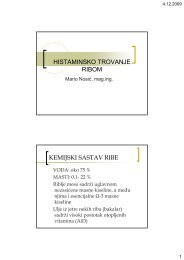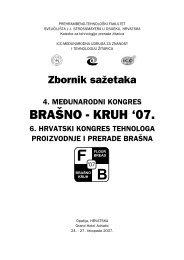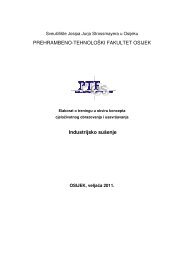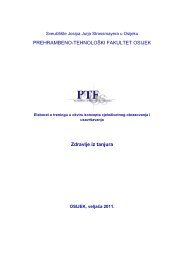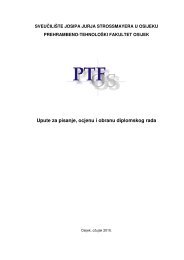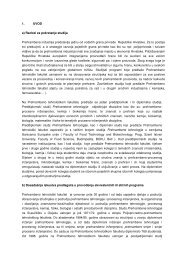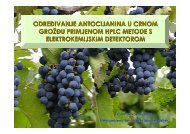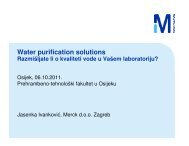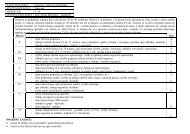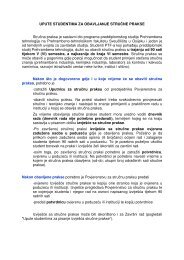ENGLISH IN FOOD TECHNOLOGY I
ENGLISH IN FOOD TECHNOLOGY I
ENGLISH IN FOOD TECHNOLOGY I
Create successful ePaper yourself
Turn your PDF publications into a flip-book with our unique Google optimized e-Paper software.
e) Brand substitution is a well-known type of fraud. In this regard, food processors<br />
have a vested interest in protecting their labels.<br />
f) Age often differentiates premium products, e.g. Scotch whiskey when aged in oak<br />
barrels undergoes subtle changes in its composition that improve its taste.<br />
The detection of fraudulent products is a never-ending contest between criminals and food<br />
technologists. It is a technology race – as soon as a foolproof method of detection is<br />
developed, efforts are made to outwit the test. For this reason, methods of analysis tend to<br />
have a short life span. Fortunately for honest producers, the sophistication of technology is<br />
becoming more difficult to circumvent.<br />
The use of isotope ratios in food authentication is an example of the progress which has<br />
been made. The unique ratio of isotopes, such as 12 C to 13 C or 2 H to 1 H, found in certain food<br />
products provides a fingerprint that can be used in authentication. This is the case with honey,<br />
in which the concentration of 13 C distinguishes it from other sweeteners. The analytical<br />
procedure, however, is somewhat involved. Because the level of 13 C in pure honey may vary<br />
depending on the source, 13 C is determined for two components of honey – protein and<br />
carbohydrate. The value for the protein provides an internal reference against which the<br />
isotope ratio for the bulk of the honey can be compared.<br />
One method for checking the authenticity of fruits and vegetables is analysis of trace<br />
minerals. Soil- plant systems are acutely responsive to the concentration of minerals in the<br />
soil, plant species and growing conditions. The uptake of nutrients from the soil is affected by<br />
each of these variables. Thus, in potatoes, trace minerals have been used to determine<br />
geographic origin. Atomic emission spectroscopy provides the extreme sensitivity required<br />
for this analytical procedure.<br />
Food technologists often use markers, which are valuable to determine the origin of a<br />
product and to evaluate quality changes either during processing or under storage conditions.<br />
Broadly defined, a chemical marker is a compound, whether naturally occurring in a food or<br />
intentionally added, which serves as a means for determining a product attribute. By virtue of<br />
their quantitative, predictive and mimicking features, chemical markers are ideal tracking<br />
tools. Examples of chemical markers include the chiral flavour compounds that occur in<br />
abundance in natural flavourings, essential oils and other plant extracts. Chiral compounds are<br />
frequently found among the flavour volatiles of fruits. Such markers provide analysts with a<br />
means of authenticating the products.<br />
John.E.Stauffer, Cereal Foods World, Quality Assurance, ,<br />
June 2002, Vol. 47. No 6<br />
10



